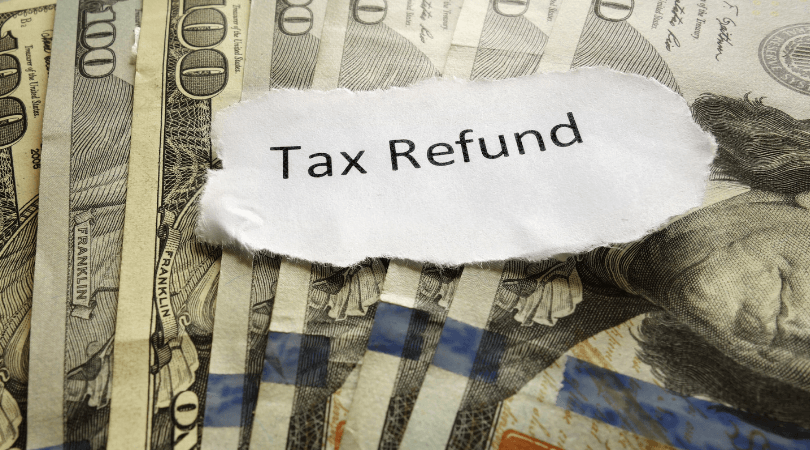Will the 2022 tax filing season be normal? According to tax attorney Ken Berry, it’s not likely that when Spring 2022 comes around that everything will be like it was in 2019 or before. Covid-19 will still be a concern, several stimulus tax laws will still be challenging for some filers, and new tax laws may very well be created between now and then that add more complexity.
But the income tax filing process will likely be closer to normal than either 2020 or 2021 were, which both had extended filing deadlines due to closures of IRS offices, the tax courts, and IRS and tax firm staff being new to remote working.
In other words… be ready to have your taxes filed (or an automatic extension filed) by Friday, April 15, 2022. The good news is that the federal and state income tax returns filing process should be closer to normal, as well. Depending on when a taxpayer files, they can often receive their tax refund payments (check or direct deposit) within only 2-3 weeks.
Traditionally (meaning pre-Covid), the IRS starts accepting tax returns during the last week of January. If major new tax legislation is passed at the end of the year, however, this could push the start of tax season back by a week or two. So, early tax filers who are a due a refund can often see them as early as mid or late February. However, taxpayers with the Earned Income Tax Credit or Child Tax Credit generally have their refunds delayed by about one month while the IRS confirms eligibility for these credits.
Although the last two tax filing seasons were significantly impacted by the Covid-19 pandemic, and the IRS extended both deadlines, the IRS is not expected to extend the tax filing deadline for 2022.
The below chart shows an estimated timeline for when a taxpayer is likely to receive their refund, based on the information we have now, and using projections based on previous years- and depending on when a person files their return. If your IRS income tax refund is delayed after you’ve filed, ask your tax professional, or simply use the “Where’s My Refund?” tool on the IRS website. Or download the IRS2Go app to check your refund status.
Most Americans who are expecting an income tax refund receive it by direct deposit in as little as 2 weeks, although it can take longer during the peak of the filing season, which starts in late March. So it’s a good idea to e-file your tax return as soon as you have all of your tax documents (like your W2, 1099s, mortgage and student loan interest, and other items).
Several factors can determine when a taxpayer may receive their tax return, including:
- How early they file
- If the taxpayer is claiming certain credits (especially EITC and CTC)
- Whether the return is e-filed or sent by mail
- Whether the taxpayer has existing debts to the federal government
- The Covid stimulus payments sent out earlier in the year will not affect your income tax refund. (However, some taxpayers who did not receive one, may be determined to have been owed one, in which case they may be able to have it added to their 2022 refund as a credit. Ask your tax professional.)
Note: The IRS will delay processing by 2-3 weeks if an income tax return has the Earned Income Tax Credit (EITC) or Child Tax Credit (CTC), since these credits are often misused. The additional time allows the IRS to verify that taxpayers qualify for the credits.
So, here’s the chart you were looking for. If IRS changes tax season this year, we will update this chart. And remember: This is an estimate of when to expect your refund. It is not exact, as all taxpayers have different returns and situations.
| IRS Accepts E-Filed Return By: | Direct Deposit Sent (Or Paper Check Mailed 1 week later): |
|---|---|
| IRS will start accepting income tax returns on Jan. 31, 2022. | |
| Jan. 31, 2022* | Feb. 11 (Feb. 18)** |
| Feb. 7 | Feb. 18 (Feb. 25)** |
| Feb. 14 | Feb. 25 (Mar. 4)** |
| Feb. 21 | Mar. 4 (Mar. 11)** |
| Feb. 28 | Mar. 11 (Mar 18) |
| Mar. 7 | Mar. 18 (Mar. 25) |
| Mar. 14 | Mar. 25 (Apr. 2) |
| Mar. 21 | Apr. 1 (Apr. 9) |
| Mar. 28 | Apr. 8 (Apr. 15)*** |
* = IRS may delay start of tax season by a week or so.
** = Returns with EITC or CTC may have refunds delayed until March to verify credits.
*** = Filing during peak season can result in slightly longer waits.
| IRS Accepts Return By: | Direct Deposit Sent (Or Paper Check Mailed one week later) |
|---|---|
| Apr. 4, 2022 | Apr. 15 (Apr. 22)*** |
| Apr. 11 | Apr. 22 (Apr. 29)*** |
| Apr. 18 | Apr. 29 (May 6) |
| Apr. 25 | May 6 (May 13) |
| May 2 | May 13 (May 20) |
| May 9 | May 20 (May 27) |
| May 16 | May 27 (June 4) |
| May 23 | June 4 (June 11) |
IMPORTANT: If you file electronically (using an online tax program or preparer), the IRS will notify you of the actual date they “accepted” your return. This is often 1-3 days from the time you actually hit the “file” or “submit” button, and it is this date that you need to use for the above chart.
Taxpayers who mail a paper version of their income tax return can expect at least a 3-4 week delay at the front-end of the process, as the return has to be manually entered into the IRS system before it can be processed.
Be Safe – Hire a Professional
Taxpayers who use a professional, such as a CPA or EA, can ask that professional for the estimated date of their tax refund, and they can be more confident that their taxes have been properly (and legally) filed.
Other Notes:
In general, the IRS says that returns with refunds are processed and payments issued within 21 days. For paper filers, this can take much longer, however. The IRS and tax professionals strongly encourage electronic filing.
What If You Can’t File Your Income Taxes By April 15?
Taxpayers who don’t have all of the paperwork needed in order to file their taxes can easily file an extension form, “Form 4868, Application for Automatic Extension of Time to File U.S. Individual Income Tax Return.” – This will give the taxpayer until October 15 to file their tax return. No reason or excuse is needed to receive this extension, and as the title states, it is automatically granted.
However, if a person will owe taxes, it is still their obligation to pay those taxes by April 15, even if they have requested an extension to file. A professional can assist with this. Those who are due a refund generally only need to file the extension request by April 15.
Source: CPA Practice


